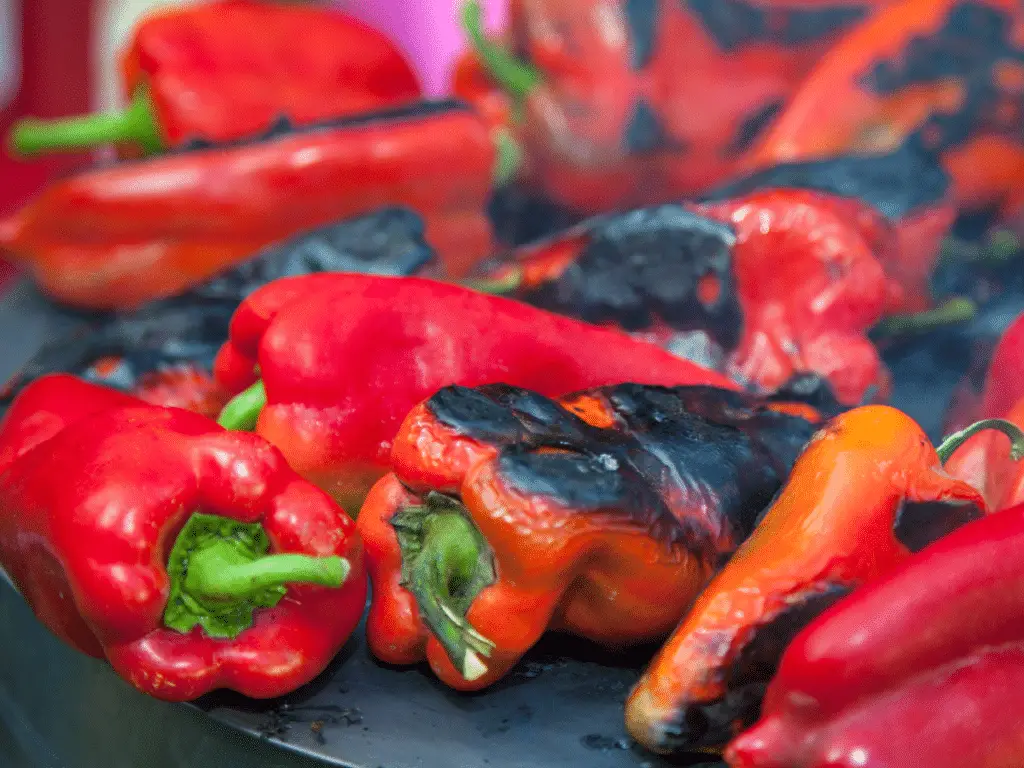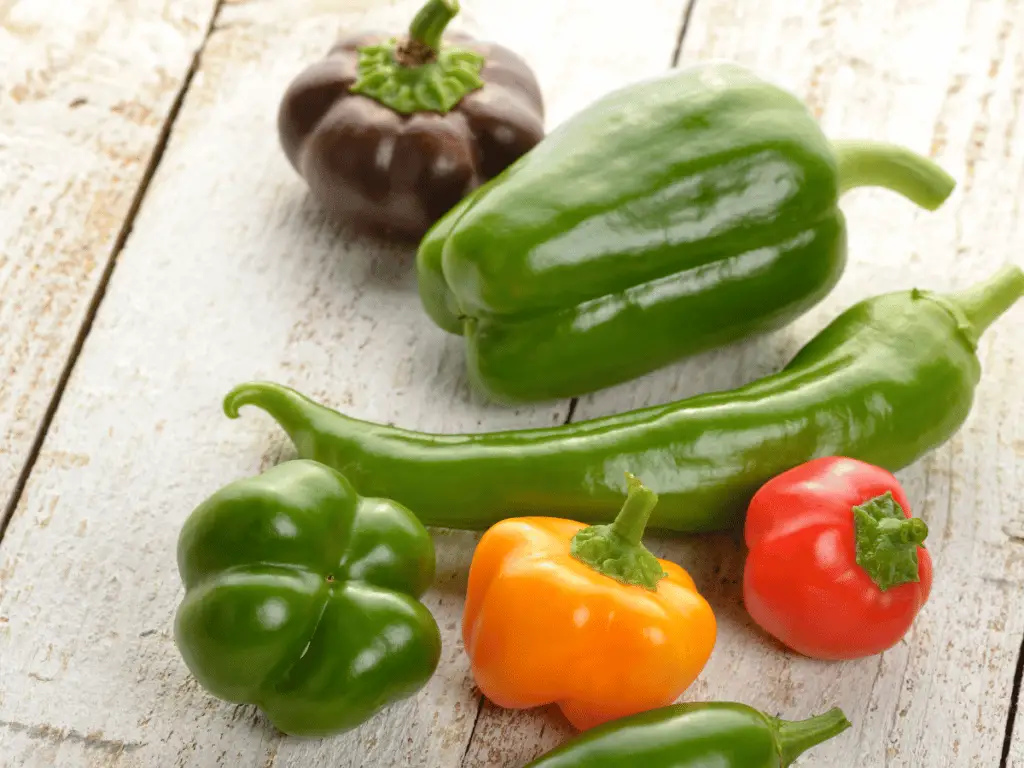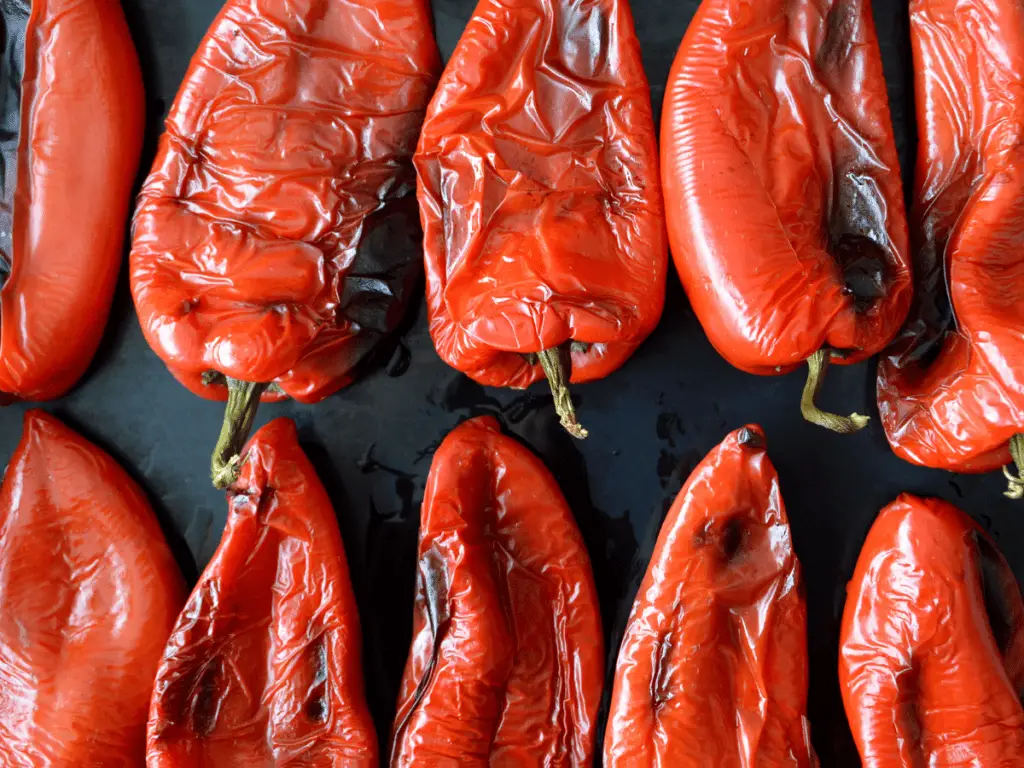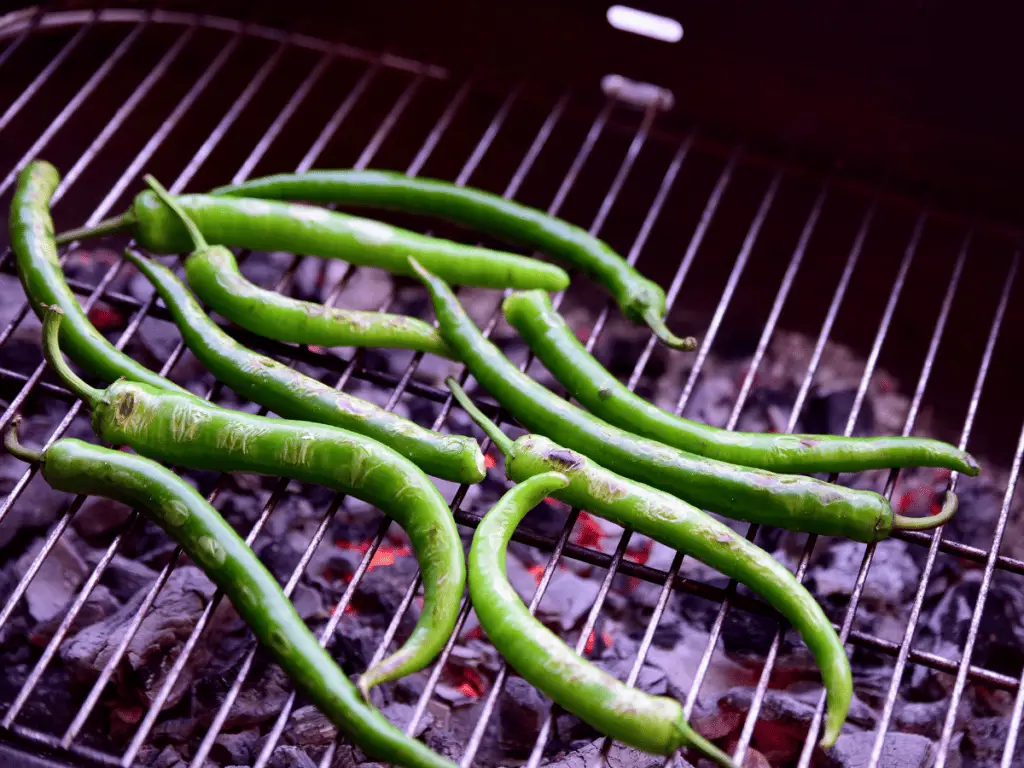Blistering peppers is an under-utilized cooking technique that can really up your pepper game.
To blister peppers, let them sit undisturbed over a heat source until they char, repeating on all sides. You can use a grill, stovetop, oven, or air fryer to blister peppers. Blistering peppers draws out unique, deep, complex flavors and makes a great addition to any dish – or you can even make them the star player!
Read on to learn how to blister your own peppers and impress everyone who eats at your table!
What does it mean to blister a pepper?
Blistering a pepper doesn’t sound very yummy, but trust us, it is!
Blistering a pepper is the act of charring it on all sides. While most raw peppers have a satisfying crunch and sauteed peppers can add great flavor to a meal, there’s really no comparison to the depth and complexity you can get when you blister a pepper.

It’s actually incredibly easy to blister a pepper – it’s so easy that the hardest part is to stay out of the way!
You can blister a pepper by placing it in the oven, on the grill or stovetop, or even in an air fryer. Follow the instructions below based on your cooking preference and avoid the temptation to mess with it!
How does blistering change the flavor of peppers?
Blistering brings out the deeper undertones of your peppers’ flavors.
The caramelization process draws out both the earthy and sweet flavors of your peppers and will transform them completely.
How blistering affects the pepper will vary depending on the variety, but it will add a great depth of flavor no matter what type you choose!
What kind of recipes call for blistered peppers?
Blistered peppers are typically used as a side dish, but can also be the star of a salad or a rice dish.
Blistered peppers are often used alongside roasted tomatoes in pasta sauces or on pizzas. They are also popular in dips, frittatas, and on fajitas, among many other uses.

Blistered peppers can also be used as a topping, such as on a salad, or as an accent or garnish beside the main dish.
Personally, I like to use roasted peppers in a romesco sauce. This recipe calls for jarred red peppers, but it’s even better if you use your own – plus you can use whatever kind of pepper you want!
How to blister peppers in the oven
The easiest and most accessible way to blister peppers is probably in your home oven. You really just need a nice, hot oven and a baking pan.
Smaller peppers will just need to be washed and dried. You may want to cut larger peppers in half as well.
To blister peppers in the oven:
- Preheat your oven to 425°F. Get the oven nice and hot!
- Rub a light coating of oil on prepped peppers. You want a neutral oil with a high smoke point for this; avocado oil is a good choice, although you may be able to get away with olive oil (not extra virgin) as long as you resist the temptation to switch your oven over to broil.
- Place peppers on a lined baking sheet and place in the oven. For most ovens, the middle rack is a safe choice. You want to be far enough from the heat source that the bottom doesn’t scorch.
- Cook until the pepper is puffy and charred, rotating to ensure all sides are blistered.
- To remove a thick outer skin (like on a poblano), place the blistered peppers in a resealable plastic bag. As the peppers cool, the steam will loosen the outer skin and you’ll be able to slide it right off before eating.

The amount of time this process takes may vary dramatically depending on the variety and size of pepper you’re working with. A skinny shishito and a thick-skinned poblano will not blister at the same rate.
This one should be pretty intuitive if you’ve already been roasting your peppers. You’re likely already blistering veggies when you roast them without even knowing it!
Pros
All you have to do is throw the peppers in and forget about them!
Ovens are a convenient and easy way to blister peppers – just roasting them for a few minutes to get that charred film.
Plus, the mess is minimal since you’ll be doing everything on an easy-to-clean baking sheet.
Cons
You must prepare the peppers with oil and wait for the oven to preheat.
The time that any given pepper takes to blister will vary; you’ll need to keep a close eye on them, especially if you’re working with several different sizes at once.
Likewise, every oven is slightly different. Ideally, you would know if your oven runs hot or cold. That way you can adjust the cooking temperature and times accordingly.
How to blister peppers on the grill
No matter what kind of grill you have, blistering peppers should be a breeze.
To prep the peppers, wash and dry them thoroughly. You can coat them with a little bit of oil if you want, but it’s not necessary. I don’t recommend cutting even the larger ones as full peppers are easier to grip and control with tongs than partial ones.

To blister peppers on the grill:
- Bring your grill up to medium-high heat. What this means may vary a little depending on what kind of grill you have. For a gas or pellet grill, aim for the highest setting (usually around 450°F; charcoal grills tend to be a little more difficult to control and can get much, much hotter so you’ll probably want to play with it a little.
- Place a whole pepper on its side directly on the grill. Most peppers will be just fine directly on the cooking grates, but you may want to pick up a grill basket if you’re planning on blistering a bunch of small peppers.
- Let it sit for 5-10 minutes until charred. It’s going to be tempting to fiddle with the pepper. Take a lesson from the burger masters among us and let it be.
- Flip and repeat on all sides.
- If your pepper has a thick outer skin, place the blistered peppers in a resealable plastic bag. As the peppers cool, the steam will loosen the outer skin and you’ll be able to slide it right off before eating.
While the other cooking methods are arguably easier, nothing compares to the flavor of a smoky blistered pepper.
Pros
The flavor of grilled peppers can’t be replicated. Grills just do it better!
Grilling peppers may just be our favorite method of blistering because of the deep flavors that they bring out.
No matter what you grill, you know what we’re talking about!
Cons
You have to wait for the grill to heat up and the temperature and timing can be less exact.
It also has to be good grilling weather, unless you’re willing to bundle up!
How to blister peppers on the stove in a pan
What about on the stove? Most Americans have an electric range, so we’ll start there.
Start by washing and drying your peppers. Use uncut peppers for this blistering method; cut peppers are more likely to end up sauteed than properly blistered. Don’t worry about oiling these peppers – we’ll be adding that directly to the pan.
To blister peppers on the stove in a pan:
- Heat a heavy pan to medium-high heat and add oil. If you have one, use a cast iron skillet for this. It can stand up to all the heat you feel free to throw at it and hold that heat for a particularly good char.
- Put a whole pepper on its side in the pan and let cook for 5-10 minutes, occasionally checking to see if it’s charred. This is really the only method where it’s okay to check your pepper regularly. While lifting the pepper off the heat will slow down the process a bit, it’s not nearly as bad as, for example, opening the oven door and releasing all the built-up heat.
- Flip and repeat on all sides.
- If your pepper has a thick outer skin, place the blistered peppers in a resealable plastic bag. As the peppers cool, the steam will loosen the outer skin and you’ll be able to slide it right off before eating.
Pros
Many people prefer cooking in a pan on the stove over all other cooking methods because it’s so familiar and straightforward.
You also probably already have a favorite pan and know how to use it effectively.
Cons
You have to wait for the pan and oil to heat up and it takes a while to blister the whole pepper.
You also might need to get the oil you don’t already have – it’s not a bad idea to get an oil with a higher smoke point than your typical olive oil.
How to blister peppers in an air fryer
Air fryers have been gaining in popularity in recent years. While not as ubiquitous as many other kitchen gadgets (I guarantee every couple still puts a good ol’ fashioned crock pot on their registry), they’re not uncommon anymore. You can even get your air fryer as part of your Instant Pot or toaster oven!
You may not have seen this one coming, but you can add “blistering peppers” to the list of things the air fryer can do.

To blister peppers in an air fryer:
- Prep the peppers. Wash and dry them thoroughly. Add some oil and salt to a bowl and toss the peppers thoroughly to coat.
- Place peppers on a rack at 400°F.
- Air fry for 6 minutes. This may vary depending on the size of your peppers.
- Flip and repeat on all sides.
This method works best for smaller peppers; I don’t recommend trying it with large peppers unless you only need one pepper blistered and have some time to experiment.
Pros
You don’t have to wait for the air fryer to preheat and it’s a quick method.
Cons
Not everyone has an air fryer and not every air fryer works in the same way. You may need to experiment to find the settings that work best for your model.
This method isn’t likely to work well for larger peppers.
